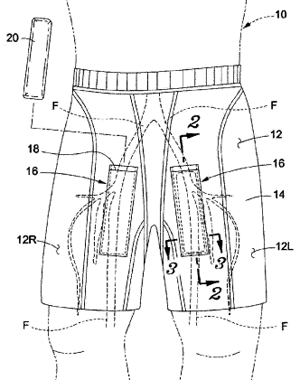 The Phase Change Matters e-mail newsletter is a weekly summary of the latest news and research on phase change materials and thermal energy storage. To subscribe, visit www.puretemp.com/subscribe. For more frequent updates, follow @puretemp on Twitter or visit the Phase Change Matters blog, www.puretemp.com/pcmatters.
The Phase Change Matters e-mail newsletter is a weekly summary of the latest news and research on phase change materials and thermal energy storage. To subscribe, visit www.puretemp.com/subscribe. For more frequent updates, follow @puretemp on Twitter or visit the Phase Change Matters blog, www.puretemp.com/pcmatters.
THERMAL ENERGY STORAGE
Long Beach TES project qualifies for nearly $1 million in rebates
A major retrofit of the Molina Center in Long Beach, Calif., has qualified for nearly $1 million in energy rebates through Southern California Edison‘s Permanent Load Shift program.
EMCOR Services Mesa Energy Systems installed a thermal energy storage system that chills a glycol-based solution during off-peak hours, when demand and costs are lowest. The chilled solution is used to cool the complex during hours of peak demand. The new system has reduced annual energy consumption by 755,775 kilowatt hours and cut operating costs by $250,000 a year.
Molina Healthcare hired Mesa Energy to install the TES system, water chillers, cooling towers, pumps and piping in the 460,000-square-foot office and entertainment complex.
SUSTAINABILITY

Cornell Tech high-rise apartment building will be world’s tallest passive house
A 26-story building under construction in New York City is being touted as the world’s first high-rise residential passive house. The 270-foot-tall, 272,500-square-foot building will hold about 350 rental apartments and is slated to open as part of the first phase of Cornell Tech‘s Roosevelt Island campus in 2017.
U.S. Green Building Council vows to boost certification of green construction
The U.S. Green Building Council has pledged to scale up in support of certification of more than 5 billion square feet of green construction over the next five years. The commitment, made at the U.N. climate negotiations conference in Paris this week, is intended to cut greenhouse gas emissions and ensure that the construction industry is doing its part in the effort to limit global warming to 2º Celsius.
“As we gather around the imperatives to address climate change … we know that buildings must continue be a key focus area for countries to reach carbon emissions reduction goals,” said Roger Platt, council president. “By encouraging the use of green building rating systems like LEED and EDGE in both the public and private sectors, countries can log immediate and measurable reductions of these emissions as their building stock uses less energy and water, creates less waste, saves money and creates a healthier environment for everyone.”
The U.S. group is one of 26 Green Building Councils from around the world pledging to collectively register, renovate or certify more than 13 billion square feet of green building space (an area twice the size of Singapore) and train more than 127,000 green building professionals by 2020.
PHASE CHANGE MATERIAL

Salt hydrate fireplace will warm floating home in Germany
A salt hydrate fireplace is among the energy-efficient features of a floating house planned for Lake Geierswalde near Hoyerswerda, Germany.
The Fraunhofer Institute has partnered with the Technical University of Dresden and the Technical University of Brandenburg and local businesses on the two-story houseboat, which will sit on a 13×13-meter steel pontoon. Solar cells will be integrated in the building envelope; lithium polymer batteries will store the collected energy.
The project is scheduled for completion in 2017. Research in Germany describes the home’s heating and cooling systems:
“A salt hydrate fireplace provides heat on cold winter days: above the fireplace there is a tub filled with water and salt hydrates.
” ‘When the fireplace is on, the salt hydrates liquefy and begin to absorb heat,’ Dr. Burkhardt Fassauer [of the Fraunhofer Institute for Transportation and Infrastructure Systems] explains. When the salt hydrates are completely liquefied, the thermal energy can be stored almost indefinitely. In order to release the heat when required, radio-based technology is used to induce crystallization. …
“However, a fireplace is not enough to heat the house during the winter. This is where a zeolith thermal storage unit in the pontoon can help: the zeolith minerals are dried during the summer – a purely physical process in which heat is stored.
” ‘In winter, the moist air is enough for the storage unit to give off heat,’ Fassauer explains.
“An adiabatic cooling system provides for cool air in the summer. Unlike conventional air conditioning systems, it does not require electricity but uses the principle of evaporative humidification to cool. A surface on the side of the house is landscaped and moistened and the process of evaporation then cools the building envelope.”
Tests show moisture-control benefits of Outlast bedding materials
Outlast Technologies, which has incorporated phase change material into hundreds of products, knows that regulating temperature is a critical part of a comfortable night’s sleep.
“We are often asked to give evidence of the performance of our heat-managing Outlast products,” said Martin Bentz, president of the Colorado-based company.
Much of that evidence, gathered in product testing, has been based on temperature data. But additional research found that temperature is not the only performance factor. Humidity plays a big role as well. Excess moisture under the covers can cause discomfort and disturb sleep.
Outlast uses two tests developed by Christoph Russ, the owner of c.russ NETCONSULT, Germany, to document the benefits of its technology. THG SleepView makes it possible to visualize the impact of Outlast and other smart materials on heat and moisture. THG AreaView provides a live insight into the thermoregulation of a human body.
“We found out that a duvet with an Outlast PCM fiber fill can reduce absolute humidity by 48 percent compared to a traditional duvet,” Bentz said.
PATENTS
Polymers and articles comprising polymers, including phase change material
U.S. patent application 20150343752 (applicant SABIC Global Technologies BV, Netherlands):
“A polymer part can comprise: a first layer comprising a first polymer, wherein the first layer allows greater than or equal to 5% of visible light to transfer through it; and a second layer comprising a second polymer and a phase change material, wherein the second layer is opaque; wherein when exposed to cyclic temperature and solar radiation conditions for a period of time, the polymer part has a lower effective temperature as compared to a polymer part without a phase change material when exposed to the same cyclic temperature and solar radiation conditions for the same period of time.”
 Thermal assistance device to heat or cool a user’s circulating blood
Thermal assistance device to heat or cool a user’s circulating blood
U.S. patent application 20150335472 (applicant Qore Performance Inc., Fairfax, Va):
“A thermal assistance device is useful to provide supplemental heating or cooling to a user’s circulating core blood, or to the blood supply to an extremity of a user. Various thermal assistance devices may hold one or more heating or cooling devices or may be covered by an outerwear garment that also provides access to the one or more heating or cooling devices. …
[T]he device may comprise phase change materials, urea, ammonium nitrate, water and/or any other exothermic or endothermic materials.”
Drying substrate using phase change material
U.S. patent application 20150345861 (applicant Worcester Polytechnic Institute, Worcester, Mass.):
“Drying a planar substrate such as paper sheet goods for packing materials includes layering a phase change material (PCM) on a substrate, in which the substrate has a moisture content and adapted for moisture removal to form a planar medium. A drying process disposes the substrate adjacent to a plurality of rollers and heat the layered substrate to a predetermined temperature based on a specific heat of the PCM. The rollers advance the layered substrate in series through pocket ventilation regions between the heat transfer elements, such that the pocket ventilation regions permit drying of the substrate enhanced by the specific heat of the temperature sensitive material. Upon drying, the layered substrate forms the planar medium suitable for use as a packing medium or other suitable application.”
IN BRIEF
• Bodle Technologies, an Oxford University spin-out, has created a smartphone screen that uses phase change material to drastically reduce battery drain while still offering a vivid display in bright sunlight.• Ice storage pioneer CALMAC shares its view on why California committed itself to “wider implementation of energy storage technologies both on the grid and behind the meter.”
• ReportsnReports has released new research on the global market for thermal energy storage equipment through 2021. Calmac, Caldwell Energy and Chicago Bridge and Iron are among the key manufacturers profiled.
• From QYResearch: Global Phase Change Materials Industry 2015 Market Research Report
• From Research and Markets: Phase Change Materials Market By Type, By Application (Building & Construction, Energy Storage, HVAC, Shipping & Transportation, Commercial Refrigeration and Others) and By Geography – Forecast (2015-2020)
RESEARCH ROUNDUP
For our full list of recent academic research, see puretemp.com/academic. Here are highlights from the past week:
From Applied Thermal Engineering:• A simplified method for modeling the thermal performance of storage tanks containing PCMs
• Performance analysis of a solar air heating system with latent heat storage in a lightweight building
• Analysis and optimization of melting temperature span for a multiple-PCM latent heat thermal energy storage unit
From Energy Performance of Buildings:
• The State of the Art for Technologies Used to Decrease Demand in Buildings: Thermal Energy Storage
From Energy and Buildings:
• Innovative cool roofing membrane with integrated phase change materials: Experimental characterization of morphological, thermal and optic-energy behavior
From Solar Energy:
• Exergy analysis and optimization of charging–discharging processes of latent heat thermal energy storage system with three phase change materials
From Renewable Energy:
• Thermal energy storage in building integrated thermal systems: A review. Part 1. active storage systems
From Materials Research Innovations:
• The preparation and property of PEG/CNTs/SiO2 microspheres phase change materials
• Phase-change building materials and its temperature control simulation
From Applied Energy:
• The influence of chain extender on properties of polyurethane-based phase change materials modified with graphene
NETWORKING
Connect with PCM experts and industry leaders on LinkedIn
More than 450 of your peers have joined a new LinkedIn group devoted to the discussion of phase change material and thermal energy storage. The Phase Change Matters group is an interactive complement to the award-winning blog and newsletter of the same name.
You are invited to join the group and connect with PCM and TES experts from around the world. New members this week include Kraig Strong, packaging engineer at Biogen Idec, Boston; Simon Batchelor, principal investigator at Gamos Ltd., Reading, U.K.; and Dr. Francis Webster, chemistry professor at Radford University, Radford, Va.
Vishnu Sasidharan, business development manager at Pluss Advanced Technologies, Mumbai, India, joined earlier this year. He introduced himself this week:
“My experience has predominantly been in the field of thermal energy storage for building HVAC applications and currently focusing on a number of exciting applications and products revolving around PCMs. From last mile food delivery solutions, cold storages, pharmaceutical transportation, retail products, ice-cream freezers, defense to retail applications we are constantly trying to offer impactful innovations that build value in this space.
“Looking forward to engaging conversations and meeting experts in the field!”
YOUR TURN
Got a question about PCMs or TES? Ask our experts
Two Entropy Solutions advisors, Dr. Mohammed Farid of the University of Auckland and Lucas B. Hyman of Goss Engineering, are ready to answer your questions about phase change material and thermal energy storage. We’ll select the best questions sent to bwelter@puretemp.com and post the answers here each Friday.